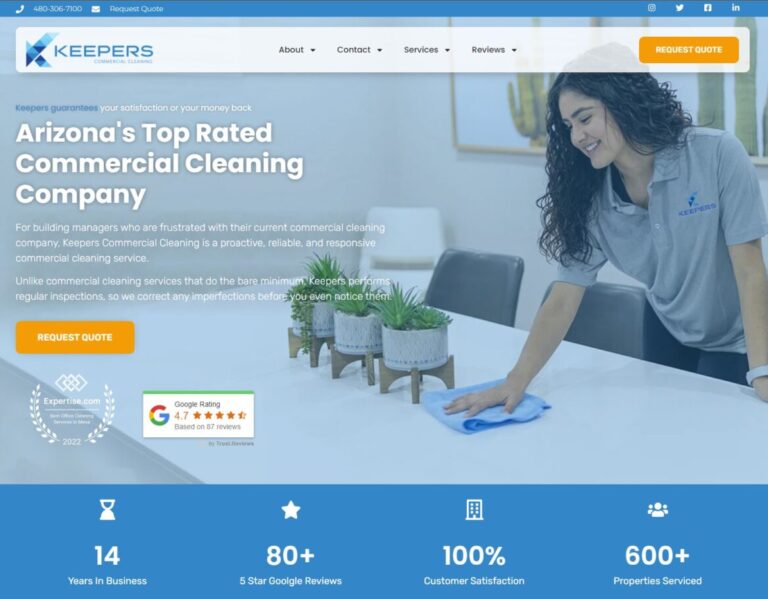Did you know that over 70% of small businesses use social media to target their advertising efforts? In the bustling digital marketplace, managing PPC (Pay-Per-Click) on social media platforms is like navigating through a dense jungle. It’s wild, unpredictable, and if done right, incredibly rewarding. But here’s the kicker: without a map or a solid strategy, it’s easy to get lost among the vines of algorithms and ad options. This post is your machete – cutting through the complexity to show advertisers how to manage their PPC and CPC campaigns effectively, optimizing ad spend for search ads. Whether you’re a seasoned marketer or just dipping your toes in digital waters, mastering PPC on social media can skyrocket your brand’s visibility and drive sales like never before.
Key Takeaways
- Understand the Basics: Before diving into PPC on social media, grasp the fundamentals of PPC advertising. This knowledge is crucial for creating effective campaigns.
- Choose the Right Platforms: Not all social media platforms will be right for your business. Select platforms where your target audience is most active to get the best ROI.
- Craft Your Campaigns Carefully: Tailor your PPC campaigns to the unique features of each social media platform. Use compelling visuals and copy to stand out.
- Manage Your Budget Wisely: Allocate your PPC budget based on campaign performance and platform potential. Regularly review and adjust spending for optimal results.
- Analyze and Track Performance: Use analytics tools to monitor your PPC campaigns. Tracking allows you to see what’s working and what’s not, enabling continuous improvement.
- Optimize Continuously: Always look for ways to refine your PPC campaigns. Test different strategies and leverage social media trends to enhance your ads’ effectiveness.
Understanding PPC
Basics
PPC, which stands for pay-per-click, is a vital part of digital marketing. It involves advertisers paying a cost each time their PPC advertising ad is clicked on websites, known as CPC. Understanding the terminology used in PPC campaigns is crucial.
Firstly, advertisers should know what impressions, click-through rates (CTRs), and cost per click (CPC) mean in PPC advertising on search engines. Impressions are how often your ad appears on screens. CTRs measure the percentage of impressions that led to clicks.
Key components of a PPC (pay-per-click) campaign include the ad itself, the offer it presents, the landing page it directs to, and the CPC (cost-per-click) rate that advertisers pay. Each plays a unique role in attracting potential customers.
Keywords lie at the heart of PPC campaigns. They connect user searches with relevant ads. Choosing the right keywords can make or break your campaign’s success, affecting communications, cost, and how much you pay for information.
Importance
PPC enhances brand visibility quickly. Unlike SEO strategies that take time to show results, PPC offers immediate exposure and cost-effective pay for businesses in communications.
It drives targeted traffic efficiently as well. You reach businesses and people already interested in the information you’re offering by targeting specific demographics and interests, which may involve a cost they are willing to pay.
Most importantly, PPC offers measurable ROI (Return on Investment). Every aspect of your campaign, including cost and information, can be tracked and analyzed for performance improvements.
Types of Ads
In managing PPC on social media, knowing different types of ads and relevant information is essential
- Display ads appear on websites within an advertising network.
- Search ads show up when someone searches for related terms.
- Video ads play before or during video content online.
For showcasing products effectively, consider using carousel ads. These allow users to scroll through multiple images or videos within one ad space, providing additional information.
Story ads, packed with engaging information, are great for engagement since they fit seamlessly into users’ browsing experiences on platforms like Instagram and Snapchat.
Integrating PPC with Social Media
Benefits
Integrating PPC into your social media strategy offers several advantages, including targeted information dissemination. The first is immediate traffic generation. Unlike organic methods, which take time, PPC ads start driving traffic as soon as they go live.
This approach allows for precise audience targeting. You can pinpoint users based on interests, behaviors, demographics, and information. This precision ensures that your ads reach the people most likely to be interested in what you’re offering.
Another benefit is flexible budget management. With PPC, you have full control over how much you spend daily or monthly. You can adjust your budget based on performance without long-term commitments.
Strategies
To maximize the effectiveness of managing PPC on social media, certain strategies are key.
Conducting thorough keyword research helps tailor campaigns to target audiences effectively. By identifying keywords that your potential customers use, you can create more relevant and engaging ads.
Implementing ad scheduling ensures your ads appear at times when your target audience is most active online. This increases visibility and improves the chances of engagement.
Lastly, using geo-targeting allows advertisers to concentrate their efforts on specific locations where their products or services are most needed or popular.
Challenges
However, integrating PPC with social media comes with its own set of challenges.
One major hurdle is the high competition for keywords. Many businesses compete for attention within the same niches making it difficult to stand out without a solid strategy.
Balancing budgets with bid strategies poses another challenge. It requires constant monitoring and adjustments to ensure that spending aligns with campaign goals without overspending.
Finally, adapting to platform algorithm changes remains a persistent issue for marketers managing ppc on social media campaigns across various platforms experience frequent updates that may affect ad performance if not quickly adapted to.
Choosing Platforms
Google Ads
Google Ads stands out for its vast network. This reach is crucial for managing PPC on social media effectively. By tapping into this network, your ads can appear across numerous sites and apps.
Utilizing conversion tracking with Google Ads offers deep insights. It helps understand how users interact with your ads. This data is vital for refining future campaigns.
Optimizing Quality Score in Google Ads improves ad placement and reduces costs. A higher score means better ad positions at lower prices. Focus on relevance, landing page quality, and click-through rates to boost your score.
Social Networks
Each social network has a unique audience. Tailoring messages for these audiences increases engagement. Understand the platform’s demographics to craft compelling ads.
Social networks offer interactive ad formats that engage users more deeply than traditional ads do. These formats include polls, swipe-ups, and video content which are more likely to capture attention.
Tracking social engagements provides insights beyond clicks or impressions. Likes, shares, and comments indicate how well your content resonates with audiences. This feedback can guide adjustments in real-time.
Niche Platforms
Niche platforms host highly engaged communities specific to certain interests or industries. Identifying these platforms allows you to connect directly with passionate users who are more likely to be interested in what you’re offering.
Customizing content for niche platforms ensures it aligns with user interests. This approach often results in higher engagement rates compared to broader platforms where messages might get lost among diverse topics.
Leveraging lower competition on niche platforms offers greater visibility without the hefty price tag of larger networks. Your platform campaigns can stand out more easily here due to less market saturation.
Crafting PPC Campaigns
Targeting
User Intent
Matching ad copy to user search intent is crucial. It ensures that your ads speak directly to what users are looking for. For example, if they’re in the early stages of research, informative ads work best.
Segmenting campaigns by funnel stage boosts efficiency. You can create different ads for those just learning about your product and others ready to buy.
Using negative keywords helps refine targeting. It prevents your ads from showing up for unrelated searches, saving you money.
Competitive Analysis
Benchmarking against competitors’ ad strategies reveals much about what works. Notice which keywords they target and how their ads are crafted.
Analyzing competitors’ keyword bids and ad copy offers insights into their tactics. You might find areas they’ve overlooked, giving you an edge.
Identifying gaps in competitors’ approaches opens opportunities. This could be a segment or need they’re not addressing with their PPC campaigns.
Budgeting
Bid Optimization
Implementing automated bid strategies brings efficiency. These systems adjust bids based on real-time data, optimizing spending.
Adjust bids based on device performance is smart budgeting. Some products perform better on mobile devices while others do better on desktops.
Seasonal bid adjustment is key during peak times like holidays or sales seasons. This ensures visibility when it matters most.
Ad Creatives
Design visually appealing ad images and videos that grab attention at first glance. Craft compelling call-to-actions (CTAs) that urge viewers to take the next step. A/B testing different creative elements pinpoints what resonates best with your audience.
Managing PPC Budgets
Allocation Strategies
Diversifying your spend across various platforms is crucial. Not all social media channels perform the same for every business. For example, a fashion brand might see better results on Instagram, while a B2B company thrives on LinkedIn. By spreading out your budget based on platform performance, you ensure no opportunity is missed.
Allocating more funds to high-performing ads makes sense. If an ad campaign is driving significant traffic or sales, giving it a bigger slice of the budget can amplify its success. It’s like adding fuel to a fire that’s already burning bright.
On the flip side, don’t be afraid to pull back on underperforming campaigns. Sometimes an ad just doesn’t resonate with your audience the way you hoped it would. Reallocating those funds can give other campaigns a chance to shine or allow you to test new strategies.
ROI Maximization
Focusing on conversion-driven objectives from the start shapes your campaigns for better returns. Whether it’s lead generation, sales, or another form of conversion, setting clear goals helps in measuring success and managing budgets effectively.
Retargeting is another powerful tool in maximizing ROI. It allows you to reach people who have already shown interest in your product or service by visiting your website but didn’t make a purchase or fill out a contact form. Retargeting these potential customers can significantly increase conversions because they’re already familiar with what you offer.
Analyzing cost per acquisition (CPA) plays a critical role too. Knowing how much it costs to acquire each customer helps fine-tune ad spend allocation for optimal efficiency and profitability.
- Pros:
- Identifies most cost-effective strategies
- Helps avoid overspending
- Cons
Analytics and Tracking
Key Metrics
Monitoring the click-through rate (CTR) is crucial for understanding how engaging your ads are. A high CTR means people find your ads relevant and are clicking on them. This metric gives you insight into what works and what doesn’t in your ad content.
Tracking conversion rates is equally important. It shows how many clicks turn into actual sales or desired actions. If you have a high CTR but low conversion rate, it might indicate that while your ads are appealing, they’re not effectively driving sales.
Evaluating cost per click (CPC) helps manage budgets efficiently. Lower CPC means you’re getting more value for each dollar spent on PPC campaigns on social media. Balancing quality engagement with cost efficiency is key to maximizing ROI.
Tools and Resources
Utilizing analytics tools can significantly improve campaign performance through detailed reporting. These tools track various metrics in real-time, providing insights to refine strategies promptly.
Leveraging keyword planning tools optimizes campaigns further by identifying high-performing keywords within your industry or niche. This ensures that your PPC efforts target terms likely to drive traffic and conversions.
Accessing professional ad creation tools enhances the visual appeal of your ads, making them stand out in a crowded social media space. High-quality designs contribute to higher engagement rates, improving overall campaign success.
Optimizing PPC Campaigns
A/B Testing
A/B testing is like a secret weapon for managing PPC on social media. It’s about comparing two versions of an ad to see which one performs better. You can test different headlines, images, or even call-to-action buttons.
First, you might try different headlines. One could be a question while another is a statement. This helps you understand what grabs your audience’s attention more effectively.
Then there are landing page variations. Maybe one layout has more images, and another focuses on text. Testing these can significantly increase your conversion rates because it shows what makes users click through or make a purchase.
Lastly, don’t forget about demographic targeting strategies. Perhaps targeting by age works well for some products but not others. Or maybe focusing on specific interests brings in more engaged users. By evaluating these strategies through A/B testing, you refine your approach to reach the most receptive audience.
Ad Performance
Monitoring ad performance closely ties into everything learned from analytics and tracking discussed earlier. Regular reviews of campaign metrics give insightful data that can guide future decisions.
For instance, keeping an eye on the cost per click (CPC) tells you if you’re spending too much for too little return. If the CPC is high but conversions are low, it might be time to adjust your strategy.
Adjusting targeting options based on performance data is critical as well.
- If young adults engage more with your ads than expected,
- Or if a particular region shows higher interest,
It indicates where to focus more of your budget and efforts for better results.
Refining ad copies and visuals based on feedback comes next.
- Maybe certain words trigger stronger responses,
- Or perhaps vibrant colors in visuals attract more clicks than muted tones,
These insights help tweak ads for maximum impact.
Leveraging Social Media for PPC
Content Integration
To truly harness the power of social media for PPC, aligning your ad content with your organic strategy is crucial. This means that the tone, style, and message of your ads should mirror what followers see in their regular feeds. For instance, if your brand often shares behind-the-scenes content organically, consider integrating similar elements into your ads.
Incorporating user-generated content can also boost authenticity. Imagine a customer’s glowing review or a photo using your product featured in an ad. It not only adds credibility but also resonates more with potential customers because it feels real and relatable.
Ensuring consistent messaging across all channels solidifies brand identity. If you’re promoting a summer sale on Instagram, make sure Facebook and Twitter are echoing that same message. This creates a cohesive experience for users regardless of where they encounter your brand online.
Audience Engagement
Engagement is key to making PPC on social media work in your favor. Crafting ads that invite interaction through questions or compelling calls-to-action (CTAs) can significantly increase engagement rates. For example, an ad asking viewers to share their favorite summer memory can prompt more comments and shares than one simply highlighting product features.
Responding promptly to comments and inquiries on ads shows that you value audience input and fosters positive relationships with potential customers. It demonstrates attentiveness and commitment to customer satisfaction—qualities that build trust over time.
Integrating polls or surveys directly into advertisements offers another layer of interaction while providing valuable insights into consumer preferences or behaviors. Not only do these tools boost participation by making users feel heard, but they also supply brands with actionable data to refine future marketing strategies.
Best Practices and Tips
Strategy Planning
Setting clear objectives and KPIs is crucial before you launch any PPC campaign on social media. This step ensures that every action taken is aligned with your business goals. For instance, if your objective is to increase website traffic, then your KPI might be the number of clicks or the click-through rate (CTR) on your ads.
Budget allocation across different platforms requires careful forecasting. Not all social media channels will be right for every business. You might find that allocating more budget to Facebook yields better results than Instagram, depending on where your audience hangs out. It’s about finding the right balance.
Preparing contingency plans for underperforming campaigns is also key. Sometimes, despite our best efforts, some campaigns just don’t perform as expected. Having a plan B helps in quickly pivoting strategies without losing much time or investment.
Continuous Learning
The landscape of social media advertising changes rapidly with new updates and features being rolled out frequently. Staying updated with these changes can give you an edge over competitors who stick to old tactics.
Analyzing past campaigns provides valuable insights into what works and what doesn’t for future initiatives. Maybe a video ad performed exceptionally well compared to image ads, indicating a preference in your audience’s content consumption habits.
Participating in industry forums and webinars plays a significant role in ongoing education about managing PPC on social media effectively. These platforms offer fresh perspectives from experts worldwide which could inspire innovative approaches for managing PPC campaigns.
Final Remarks
Navigating the PPC landscape on social media can feel like sailing in open waters: thrilling yet daunting. You’ve got the compass—understanding PPC, choosing the right platforms, crafting campaigns, managing budgets, and analyzing data for optimization. It’s all about mixing creativity with analytics, like a chef perfecting a recipe. Remember, the secret sauce is in leveraging social media’s dynamic nature to boost your PPC game. Think of it as tuning your guitar perfectly before a big show; every note matters.
Now, take the wheel. Experiment, learn from your mishaps, and celebrate your wins. Dive deeper into each platform’s unique rhythm and make it work for you. Got questions or insights? Share them! Let’s keep the conversation rolling and turn our collective knowledge into PPC symphonies. Ready to rock the social media stage with your PPC campaigns? Let’s hit play!
Frequently Asked Questions
What is PPC in social media?
PPC, or Pay-Per-Click, is like hiring a digital billboard on social media platforms. You pay each time someone clicks on your ad. It’s a fast track to getting noticed online.
How do I integrate PPC with my social media strategy?
Think of it as adding rocket fuel to your existing plan. Start by defining your target audience and goals, then select the right platforms that align with those targets. Finally, craft ads that resonate with your audience.
Which social media platform is best for PPC campaigns?
It’s like picking the right party to attend! Facebook and Instagram are great for broad audiences, while LinkedIn works wonders for B2B connections. Consider where your audience hangs out the most.
How should I manage my PPC budget effectively?
Treat it like managing a wallet full of cash; only spend on what brings value. Set clear objectives, start small to test the waters, and gradually increase spending based on performance data.
Can you explain analytics and tracking in PPC?
Imagine being Sherlock Holmes but in the digital world. Analytics lets you follow the trail of how well your ads perform—clicks, impressions, conversions—you name it! Tracking these metrics helps you make smarter campaign decisions.
What does optimizing a PPC campaign involve?
Think of it as tuning up a car engine for better performance. You tweak keywords, ad copy, targeting parameters—all based on data—to get more bang for your buck (or click).
How can I leverage social media specifically for improving my PPC results?
Social media is like hosting an engaging party where everyone wants an invite. Use its interactive features—like polls or stories—to gather insights about preferences or pain points and refine your ads accordingly.









